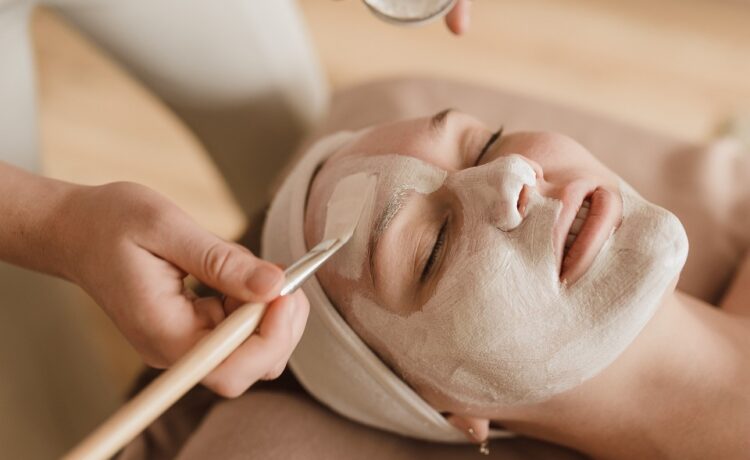If you’re looking to transform your complexion with a face mask, you’ll want to keep some tips in mind. You’ll also need to know your skin type and if you have any unique concerns.
Know Your Skin Type
Knowing your skin type is one of the most valuable skincare knowledge you can possess. It’s important because it helps you identify what ingredients to look for in a mask and what formulas will work best for your complexion. Plus, it helps you avoid products that could do more harm than good.
One way to determine your skin type is to use a simple at-home test:
- Wash your face (with a gentle cleanser).
- Pat it dry.
- Leave it bare for half an hour.
If you can see that your face is shiny all over, then you have oily skin; if you only see the shine in the T-zone, then you have combination or normal skin; and if you’re parched with tight and scaly spots, you have dry skin.
However, remember that your skin’s natural baseline can change with the seasons or certain medications. Therefore, it’s a good idea to regularly test your skin’s health to ensure you have the most accurate picture possible.
Know Your Budget
The price of face masks can vary greatly, so it’s essential to know your budget before buying one. The cheapest option will likely be an over-the-counter product, while the most expensive will probably be a professional treatment. If you have a specific skin concern, like dark spots or pigmentation, it’s worth paying a little more for a mask containing ingredients geared explicitly toward that concern.
Even if you’re not looking to treat a particular skin condition, a face mask can be an excellent way to relax while getting your beauty fix. And while you won’t get the same results as an in-office procedure, they can help improve your skin over time if used regularly.
You can also save on the cost of face masks by purchasing them with a Sephora promo code. Many retailers offer product coupons through various platforms, including social media and official websites. These discounts may only sometimes work, so check the terms and conditions of each deal before applying them to your cart.
Know Your Mask Type
The best face masks are made with ingredients that target your skin type. If your face is dry or sensitive, look for a mask that contains ingredients like hyaluronic acid, shea butter, or glycerin to help moisturize. If you have oily or acne-prone skin, look for a mask with anti-inflammatory ingredients like cucumber or tea tree extract to help balance it.
You should use a respiratory mask if you’re a high-risk individual (like a healthcare professional) or live where the coronavirus is still at a higher level. These masks are designed to fit closely on the face and filter out particles, including droplets you breathe, cough, or sneeze out and those spread by others.
Buying one that meets ASTM standards is essential when looking for a respirator mask. When choosing a mask, look for the ASTM F3502-21 workplace performance labels. The higher the number, the better the mask’s filtration. You can also find masks that meet CDC guidelines for protection when traveling or working outside of your home.
Know Your Ingredients
The effectiveness of a product depends on its ingredients. The mask traps the ingredients on your skin and creates a film that helps hydrate, moisturize, dry, or exfoliate your skin, depending on the mask’s formula. It allows you to target specific skincare concerns, such as acne, hyperpigmentation, fine lines and wrinkles, and dullness, in a more concentrated way than other products.
For example, a face mask with avocado can smooth skin texture and contain fatty acids and vitamins that help nourish the complexion. A mask with honey is another hydrating ingredient with natural antiseptic properties to combat acne-causing bacteria.
For those concerned with fine lines and wrinkles, a line-minimizing targetted triangle mask is clinically proven to improve the appearance of forehead lines, smile lines, crow’s feet, and nasolabial folds (or laugh lines). It uses hexapeptide and hyaluronic acid to plump your skin and reduce the look of wrinkles. Most face masks will have a list of ingredients on the packaging and should come with instructions on using the product.
Know Your Application
The most effective facial masks are formulated with high ingredients that target specific skin concerns, like fine lines, enlarged pores, and visible redness. These formulas can be used as a leave-on treatment or rinsed-off, making them perfect for reviving dull skin, tempering visible redness, and boosting hydration.
However, with so many face masks on the market claiming to include unusual ingredients like mushroom juice and snail jelly, it’s essential to know how a mask works before you apply it to your entire face. These types of fancy masks contain a lot of fragrances and dyes that can harm your skin.
Instead of scouring social media or the drugstore aisles for a magical facial mask, it’s always best to stick with tried-and-true products formulated by dermatologists and beauty editors. For example, a face mask formulated with vitamin C and fruit-derived AHA’s is great for brightening and hydrating the skin. At the same time, this one infused with madecassoside (a compound found in Centella Asiatica) is the best way to calm inflammation and temper redness.






